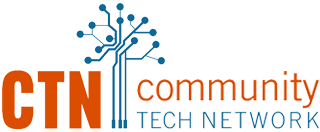Myth: Smartphones are enough to bridge the digital divide.
Imagine that you’re a high school student writing a 10-page essay on your phone. How difficult is it to switch between all the tabs on your browser that contain your research? How long will it take you to type all of the content using your phone’s little keyboard?
But it gets worse. When you’re halfway through the project, you realize that you can no longer open Google Docs, the application that you were using to type your paper. You can’t open your research tabs on Safari either. Looks like it happened again — you went over your data cap.
While this story is fictional, it’s a reality for many smartphone-dependent young people across our country.
Almost everything in today’s society is available online, and since 85% of Americans have smartphones, some might think that internet access is — quite literally — in the palm of everyone’s hand.
However, 15% of people in the U.S. are smartphone dependent, meaning that they do not have reliable broadband, or high-speed, internet at home to supplement their cell phone coverage. While this percentage might seem small, let’s put it in perspective. If you step into a classroom of 20 kids, about three of them on average will not have broadband access, affecting their ability to succeed in school.
But this issue doesn’t just impact students. Have you ever tried to file a job application on your phone? How hard was it to attach all the necessary documents? Or perhaps you’re someone with poor eyesight: Do you struggle to see the tiny letters on your screen when you’re texting loved ones? Maybe you’ve had telehealth appointments over the phone: Would it have been easier with a computer or tablet?
According to Pew Research, low-income (under $30,000/year), young (ages 18 to 29), Hispanic and Black individuals are the most likely to be smartphone dependent. Almost 1 in 3 young people and 1 in 4 Hispanics consider their smartphone to be their only source of internet access.
Cell phones definitely make our lives easier. If your sink is clogged, ask Siri how to fix it and she’ll give you an answer in two seconds. If you don’t have a ride to work, Uber is a few clicks away. If you go to the store and forget your cash, no worries; Apple Pay has your back.
But if we truly want to bridge the digital divide, all of us must have equal access to the same technological resources. Everyone deserves access to broadband.
If you know someone from a low-income household that lacks broadband access, they may qualify for discounted services through the Affordable Connectivity Program. Learn more.
This is the first in a series of blog posts about digital myths.
Photo: Pew Research, 2021


Comments are closed.